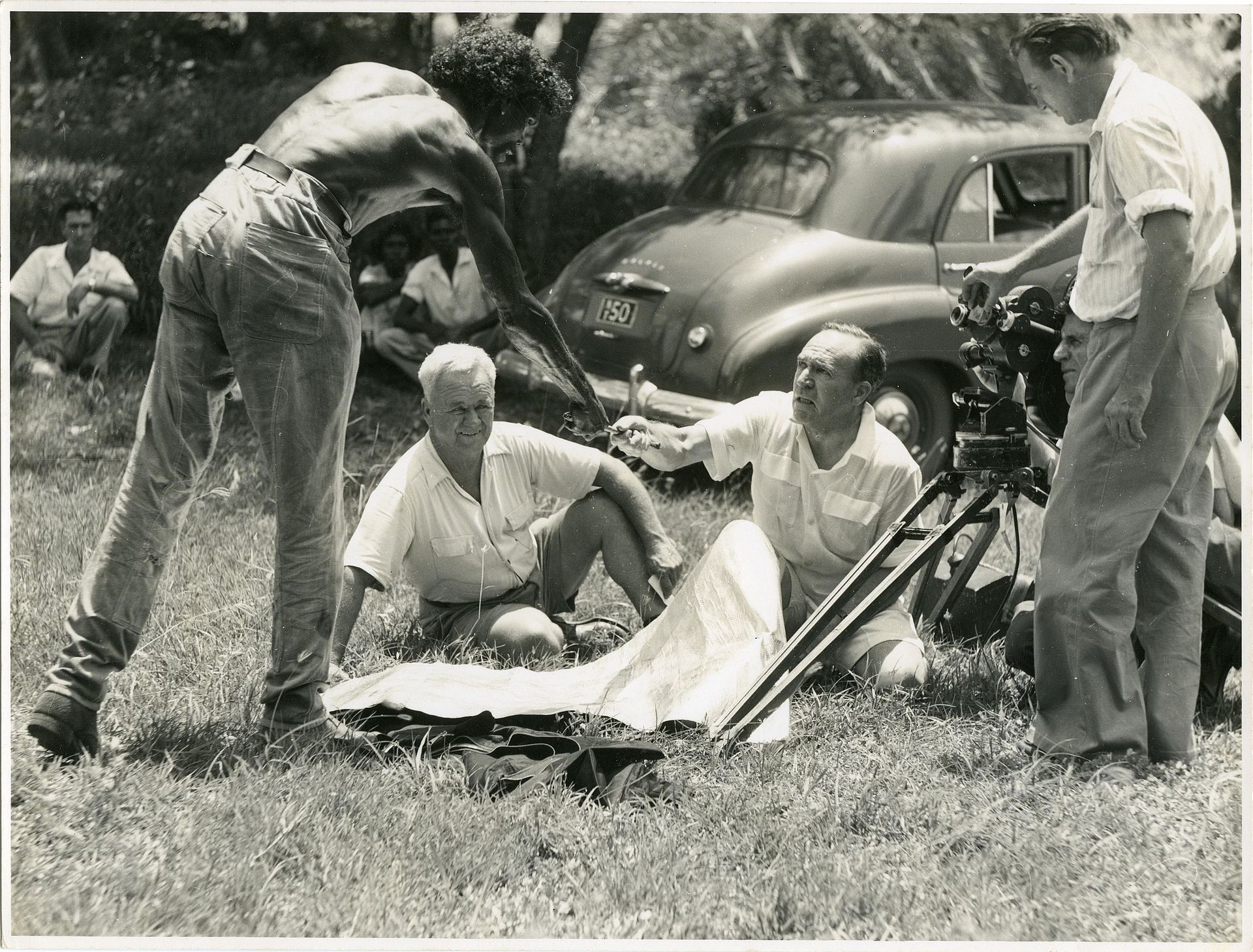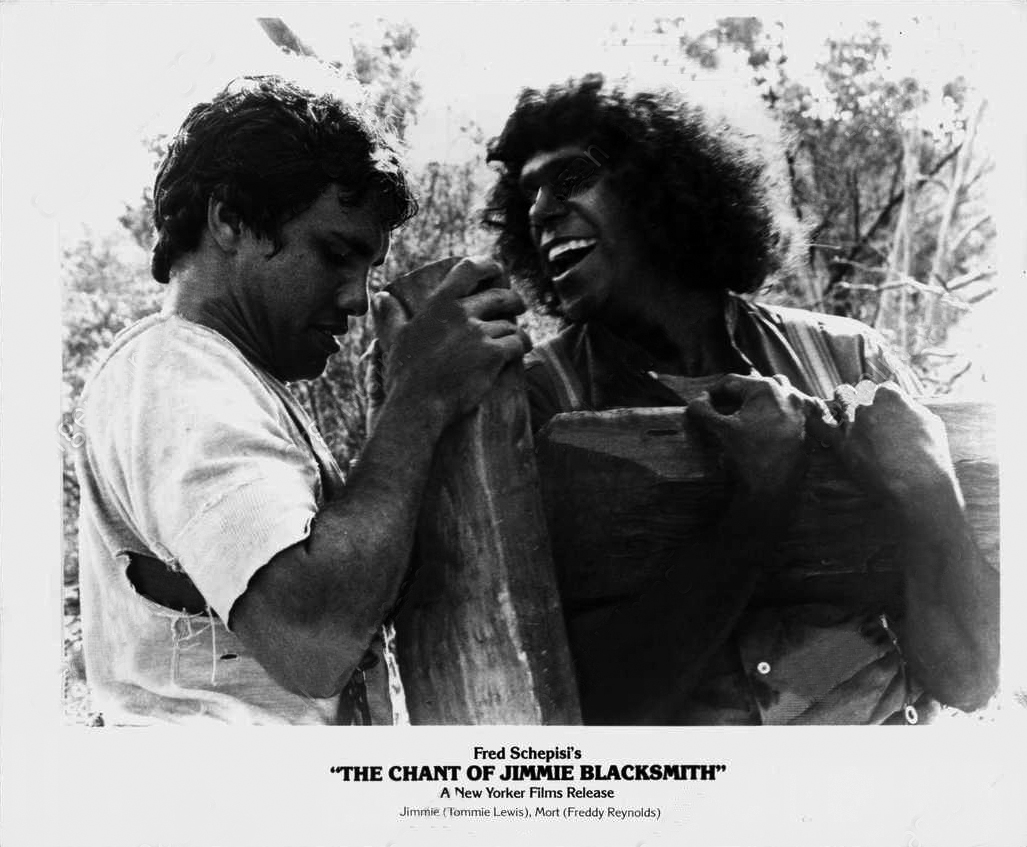Following a long history of neglect, disrespect and ill treatment from the government, Indigenous Australians started to appear in films during the 1950’s, resulting in some of the best examples of Australian cinema to this day.

As well as being the first Australian film shot in colour, Charles Chauvel’s 1955 Jedda was the first to star two Indigenous Australians in the lead role. Robert Tudawali and Ngarla Kunoth, who would both later go on to careers in activism and Aboriginal rights, became stars with the release of the film, large crowds gathering to see them at the premiere. Though the filming process for Jedda was difficult and laborious in the heat of the Northern Territory and the film itself was only considered mediocre at the time, it stands as a testament to a new way forward for Australian film inclusive of all Australians, and was a brave move in production against the throng of Hollywood films being released at the time.
Even earlier than this, British-Australian anthropologists Baldwin Spencer and F.J Gillen had traveled between Borroloola and Oodnadatta in South Australia and shot film of the Indigenous Australians they were working with sometime between 1901 and 1902. During this journey they also pioneered the capturing of sound, recording on wax cylinders. Though their experiments can’t be called filmmaking, it stands to reason their interest and the interests of others in the lives of Indigenous Australians is important in the history of Australian cinema.
At the start of the 20th century, Indigenous Australians lived in what were called Aboriginal Reserves. Under the guise of ‘protecting’ the Indigenous population, Aboriginal Australians essentially lost their basic human rights and had their existence controlled by the government. Not only did they lose their property and their rights to free movement, they also lost custody of their children, resulting in what is now known as the ‘Stolen Generations.’ This idea was not completely repealed until the Aboriginal Lands Act of 1970 when Indigenous children came under the same welfare act as white Australians and recognition of Indigenous Australians rights to land was widespread.
The period up until the late 1960’s in which the Indigenous population were stripped of all rights as human beings can be considered one of the most shameful in Australia’s long history of disrespect and violence towards traditional land owners, and it is a shame that is still being apologised for with attempts at reconciliation today.
Because of these racist and horrific policies, it comes as no surprise Indigenous Australians were underrepresented and essentially absent in Australian cinema up until the release of Jedda. Even then the film was hardly an accurate or even sympathetic portrayal of the Indigenous population. Much of Australia, and therefore much of the world, saw Indigenous Australians as savage and uncivilised. For a long time, the stories being told of Indigenous history were only of murder and conflict, such as 1978’s The Chant of Jimmie Blacksmith.
Based on the novel by Thomas Keneally and directed by Fred Schepisi, the film is based on the life of Indigenous man Jimmy Governor, remembered for his murder of a white Australian family in retaliation for their derogatory comments. The film won numerous accolades, and despite its dark story was hailed for its “damning condemnation of white Australia’s racism.” Though the films portraying the lives of Indigenous Australians often featured violence and savagery, Australian filmmakers, especially during the 1970’s as the New Wave movement gathered influence, began to feel the urge to portray accurately the racist wrongdoings of the past.

Another spectacular film to emerge during the New Wave movement was 1971’s Walkabout. This film introduced David Gulpilil to the screen, an Indigenous man who has become a staple in many historic and culturally significant Australian films. Walkabout offers a more sympathetic and positive view of the way of life for Indigenous Australians, exploring philosophical human themes instead of focusing on the perceived savagery of the Australian outback. These themes were echoed in 1976’s Storm Boy. Based on the book by Colin Thiele and also starring David Gulpilil, the film, which was remade in 2019, was a box office hit as well as a hit among critics. Australian filmmakers and storytellers had begun to recognise the wisdom in relation to land, life and love to be learned from Indigenous Australians, and had begun including these ideas in their films instead of a focus on savagery.
Following the repeal and recognition of the horrors of the Aboriginal Reserves, artists began to explore what had happened in the past through the medium of film. This was exemplified in Nick Parsons’ 1996 film Dead Heart, which examines the prejudices against interracial relationships. The film also brings to light the issues of reconciliation, as each character struggles with how to blend Indigenous traditions with contemporary Australian ideas. Dead Heart won awards for its screenplay and score, and also starred national treasure Ernie Dingo alongside Australian screen legends Bryan Brown and John Jarratt, known now for his portrayal of serial killer Ivan Milat in 2005’s Wolf Creek.
Though the early 2000’s were not a prolific time for Australian cinema, they did see the emergence of further Indigenous representation in film. Rolf de Heer directed and released The Tracker in 2002, described as a ‘meat-pie Western’. Starring Gary Sweet, David Gulpilil and Damon Gameau, The Tracker depicts a racist white policeman who enlists the help of an Indigenous man to track another Indigenous man charged with murder. With a stunning soundtrack by celebrated Indigenous musician Archie Roach, the film was highly successful, and illustrated filmmakers desires to explore the lives and traditions of Indigenous Australians in large, commercial releases.
2002 also saw the release of Rabbit-Proof Fence. An extremely heart-tearing, horrifying illustration of the reality of the Stolen Generations, the film follows the journey of three Indigenous girls who escape from a settlement and trace a fence for nine-weeks to journey back to their home and their family. Based on a true story and told with complete transparency, one would be hard pressed to find a more truthful, tragic representation of the injustice done to the Indigenous population by white settlers. The film caused outrage from government officials and conservative critics who attacked the accuracy of the events and even tried to draw an apology from director Phillip Noyce, who instead suggested the government apologise for their historical wrongdoings.

In 2006, director Rolf De Heer collaborated with David Gulpilil on the docu-drama Ten Canoes. Based on the lives of ten hunters in Arnhem Land before Western influence, the film is subtitled, with the actors speaking in Indigenous languages of the Yolngu Matha language group. Ten Canoes was the first ever film to feature entirely Indigenous dialogue, and was one of the highest grossing films of 2006.
Indigenous representation in film, both in terms of actors and filmmakers themselves, is still growing, and no history of Australian cinema is complete without an analysis of their struggle to find a voice on screen. Such a horrid history of deep national shame needs examples of reconciliation and respect, and the growing interest in and focus on Indigenous storytelling and representation in cinema is an important aspect of societal progression in Australia.
Subscribe to FIB’s Weekly Alchemy Report for your weekly dose of music, fashion and pop culture news!






